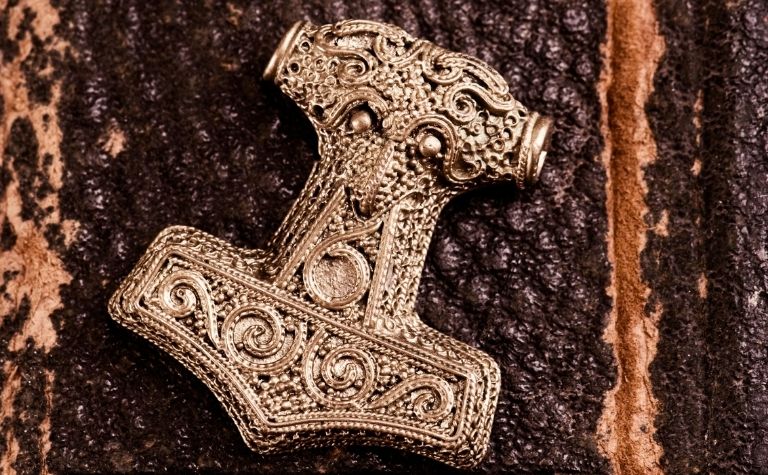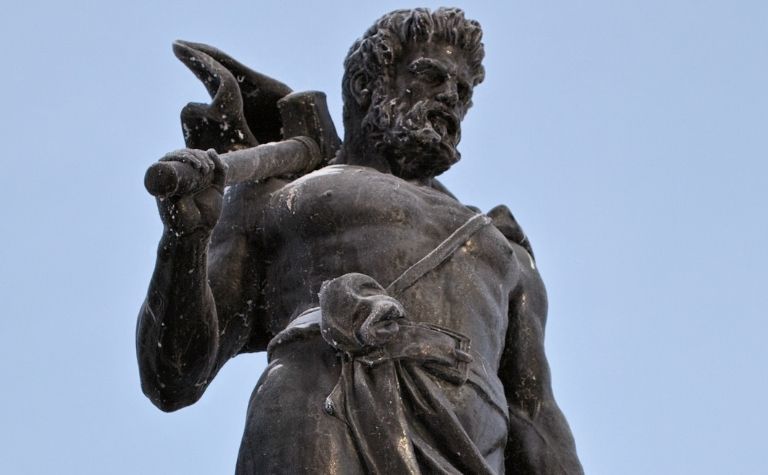Today, Thor is often associated with a fictional character from the Marvel comics and films. However, some people wonder if an actual person inspired the beloved superhero character.
Was Thor a real person or just a mythological figure?
Thor was neither a real person nor a historical figure. He is a mythical god from the Norse religion.
Thor was popular among the Vikings, and belief in him hasn’t completely ceased despite the Vikings’ conversion to Christianity. That said, Thor has no connection to a real person.
The rest of this article will describe Thor’s role in Norse mythology, the worship of Thor amongst the Vikings, and the god’s survival through colonization.
Also, see How Did Thor Get His Hammer? to learn more.

Is Thor Based on a Historical Person?
Norse Paganism was a polytheistic religion that Vikings practiced for many years. Norse mythology consists of stories of various gods, yet Thor appeared to be one of the strongest and most respected gods among the Vikings.
Thor isn’t based on a historical person and is only an invention of Norse mythology. However, Norse pagans believed in him just as strongly as any other culture believed in its gods and goddesses.
Some people, primarily in Scandinavian countries, still believe in Thor today.
Thor was known as the son of Odin, who was the main god of the Norse religion.
He was also known as the husband of Sif (goddess of fertility) and fathered Modi, Thrud, and Magni.
What Was Thor the God Of?
Historically, mythology was a method to explain life.
Thor was considered the god of thunder and agriculture. Vikings also believed him to be a “god of the people,” as stories that pertain to Thor involve him defeating a giant or other fierce opponents.
Thor also possesses a hammer, known as Mjolnir, that establishes order in the world.
Thor, being a popular god, was often invoked by Vikings for his strength.
Also, see Why Is Thor the God of Thunder? to learn more.
What Are the Stories Told about Thor?
Thor was a god of law and order. With his hammer, he was the one who established a natural order in the world.
Vikings believed he created lightning bolts and ruled the world with his immense strength.
Many mythological stories talk about Thor slaying giants, riding his chariot to create thunder, and defeating foes that were said to be more powerful than him.
Stories about Thor also find him getting into and out of some kind of trouble, usually caused by the trickster god, Loki.
However, Thor isn’t always victorious in battle. At times, he’s outsmarted and even overpowered. Vikings often found these stories to be entertaining, as they were comforting and humanized the powerful god.
They also spread a message to which all humans could relate.
In one story, Thor actually loses his hammer to a sneaky giant who stole it, and he must have Loki’s help to retrieve it.

Did the Vikings Believe Thor Was Real or a Myth?
The Vikings did not believe Thor was a myth. He was a genuine god to be revered and honored for his strength.
They worshipped Thor and the other Norse gods, but Thor was considered one of the most popular gods and was involved in wars, championing the people.
The Vikings saw Thor as a representation of strength and as a symbol of protection and they believed that invoking Thor would bring about security and power to their bodies.
Thor was celebrated often, as evident through the many amulets, charms, statues, and engravings surrounding the god and his tales.
However, there isn’t much on specific worship or rituals surrounding the Norse god.
Norse Paganism lacks any religious text, and therefore historians cannot trace much information.
Any old traditions and customs within the Norse religion became especially difficult to uncover once Christianity began to rise in Scandinavia — a country inhabited by the Vikings.
Due to this lack of more detailed evidence, it’s not easy to clearly illustrate what Norse worship was.
Also, see How Old Is Thor? to learn more.
How Did the Arrival of Christianity Affect Norse Paganism?
Many Norse countries traded with European countries. With trading amongst Scandinavia and other European countries, it was inevitable that Christian ideas would be shared and spread throughout the area.
What was once a predominantly pagan country had at that point become a nation with an overwhelmingly Christian population.
Many Vikings terminated their pagan beliefs for the Christian religion. However, before the general ideas of Christianity, there were Vikings who incorporated aspects of Christianity into their faith.
According to history, the conversion to Christianity was a prolonged process.
Vikings accepted it as more of a set of beliefs and ideas that could co-exist with pagan mythology rather than a firm absolute.
Eventually, Christian missionaries insisted on Christianity being the only religion that the Vikings believed in, which caused many Vikings to let go of their pagan beliefs and completely embrace and convert to Christianity.
The colonization of Christianity occurred in these Norse-worshipping countries as well:
- Denmark: The work of converting Vikings was mainly done by Archbishop Anskar.
- Norway: Though Christianity already co-existed with Norse Paganism, Christianity began to grow after the country became a monarchy.
- Iceland: Iceland was already converting to Christianity, yet the conversion wasn’t official until King Olaf Tryggvason sent a German priest to the island.
- Sweden: The historical account of the conversion to Christianity is unclear.
- Greenland: Erik the Red settled in the land and brought many Christians with him.
Do People Still Worship Thor Today?
Despite the old age of the Norse religion, Norse Paganism still has a fair following in the 21st century.
Some people still worship Thor and the other Norse gods to this day. Although Norse Paganism disappeared when Christianity grew, it has made a comeback in more recent years.
Today, there are as many as 1000 people who follow Norse Paganism in Denmark.
Followers of the Norse religion still meet in open spaces where they offer gifts and make toasts to the Norse gods, including Thor.
They desire that he helps them prosper with an abundance of crops or gain more strength.
Why People Still Believe in Thor
Modern followers of Norse Paganism participate in Asatro. As mentioned above, there was very little to no detailed evidence to explain what worship looked like during the Viking Age.
However, present-day followers of Norse paganism read old poems — such as the poetry of the Elder and Younger Edda — and interpret their rituals and religious worship.
The goal for many of the modern Norse religion followers is to revive a distinct and old part of their country’s culture and history.
Conclusion
Although Thor isn’t a real person, he’s still revered as a god just as he was before the arrival of Christianity.
